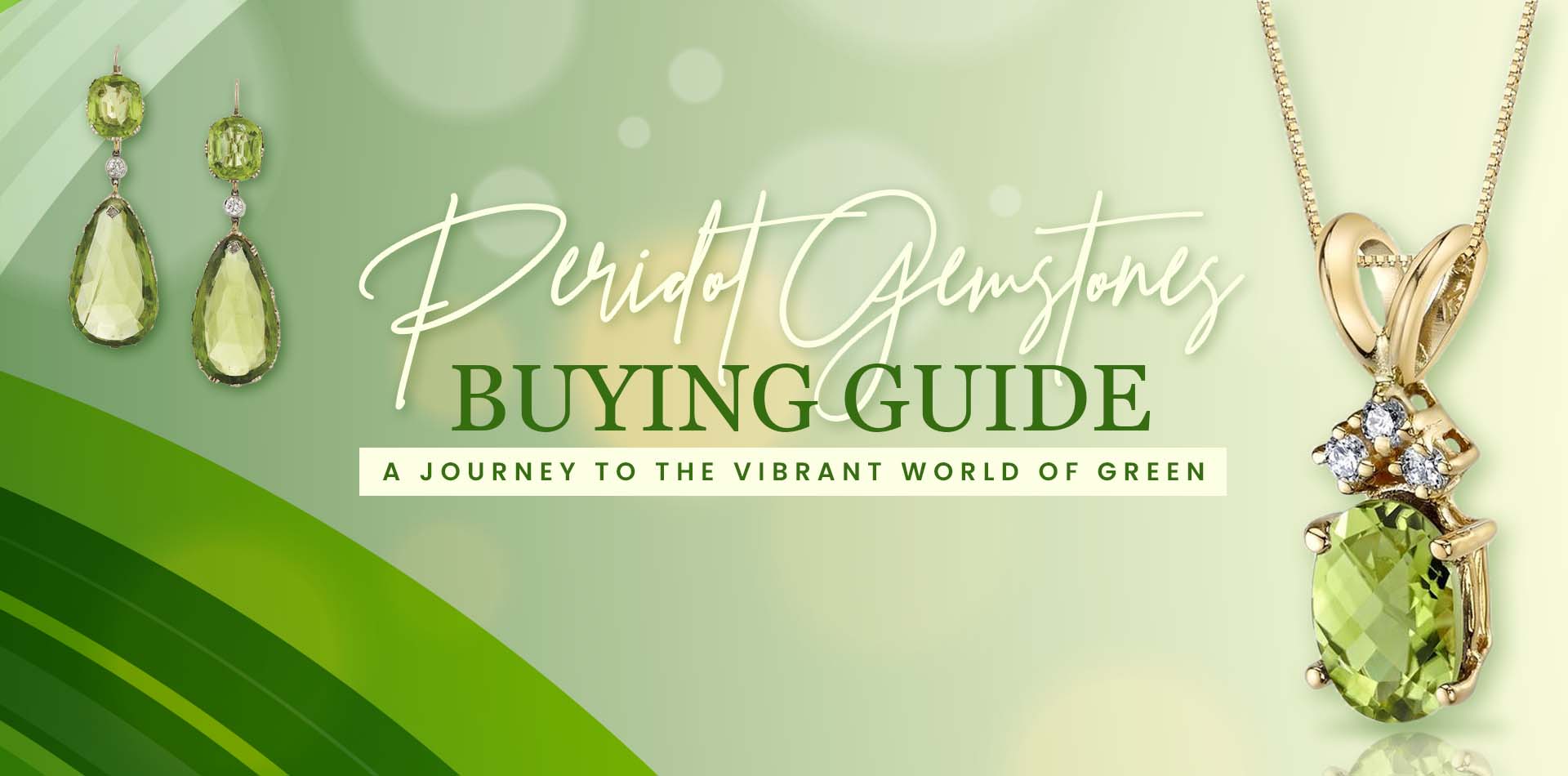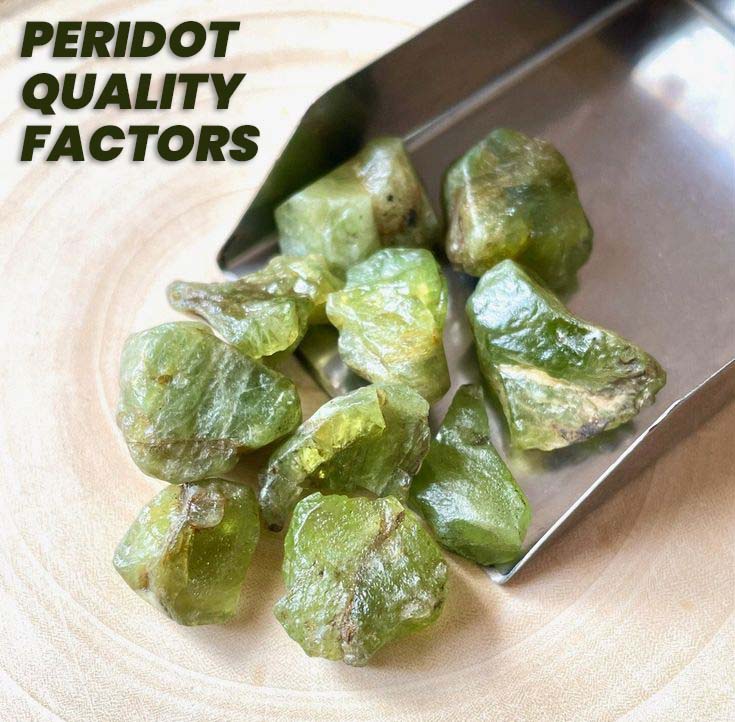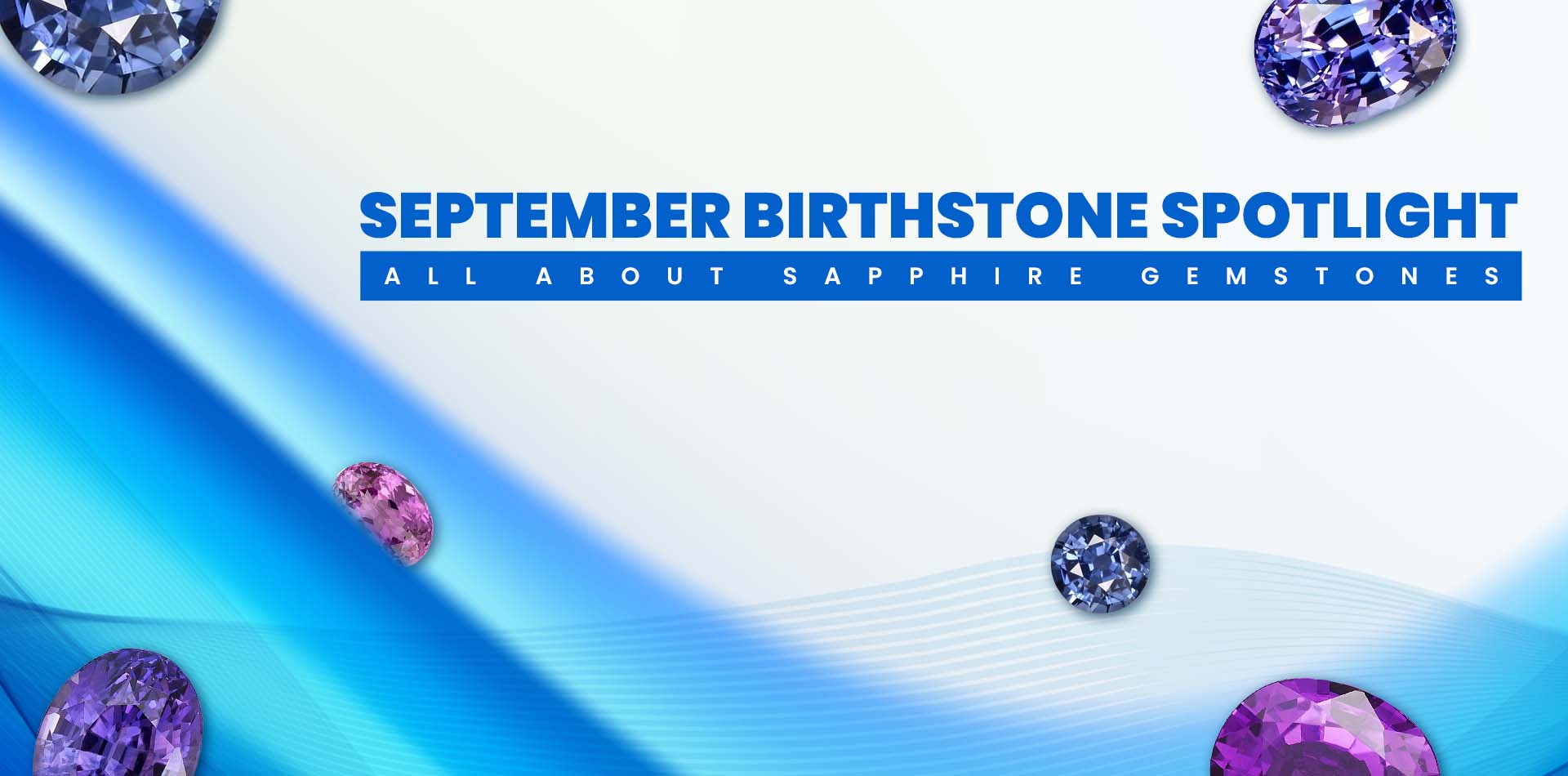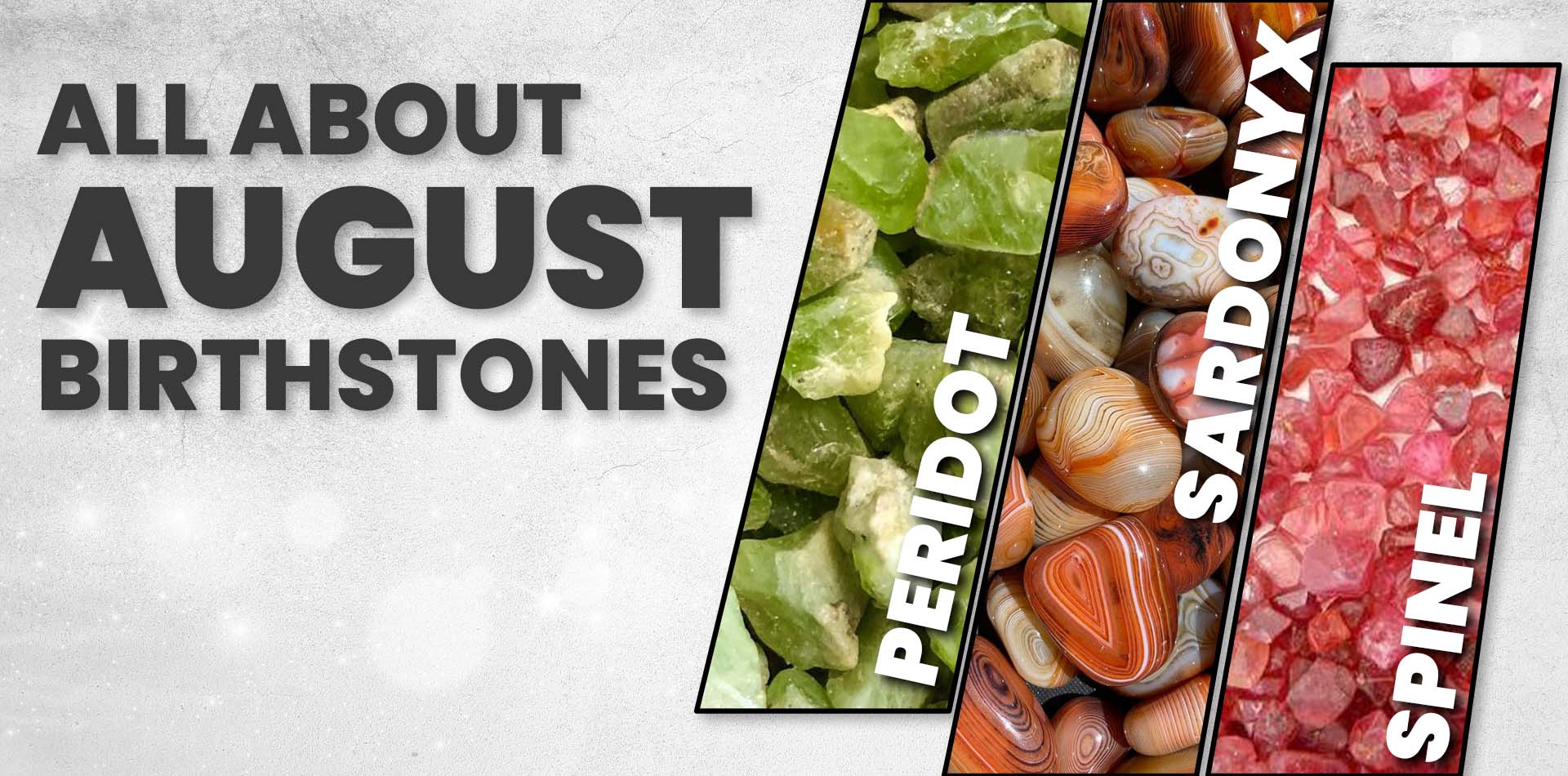Peridot Gemstone Buying Guide: A Journey to the Vibrant World of Green

Introduction: Peridot Gemstone
Peridot was called ‘gem of the Sun’ by the Egyptians rightfully because of the power it holds. Peridot is the birthstone of the month of August and is prized for its vibrant green and yellow hues.The gemstone has the concentration of mineral olivine. The green color of the gemstone is a result of the presence of iron and magnesium. Peridot birthstone is known to aid in purification of the heart of the wearer and is vicariously used in making fine jewelry pieces. Most of the time, the attributes of purity, calmness, and serenity are associated with the gemstone.
The formation of peridot occurs much deeper in the upper mantle of the planet than that of many other coloured gemstones, which typically occur in the crust. Peridot is brought closer to the earth's surface by volcanic activity after naturally forming deep within the earth.
For thousands of years, the stone has been used in jewelry making and it was believed that the stone offers protection against evil and bad dreams.
In this peridot buying guide, you will get to know various nuances and smoke crucial tips that are necessary while purchasing the gemstone. Let's dive in on golden details on how to buy peridot!
How To Determine if a Peridot Stone Is Real?
Unlike other gemstones, it is rare for a peridot stone to be faked. If so, fake peridots are often made of glass, which makes it easier to detect any regulations, and distinguish a real one from a fake one. There are some of the ways or methods to determine if the peridot stone is real:
Checking for double refraction: Peridot gemstone is known for having high double refraction. This means that when we closely look at the stone, we will be able to see each of its facets. Hold the peridot against the light and closely examine it. If there is no double refraction, then the stone is not real.
Colors: Another simple way to check if the gem is real is to look at its colors. The real peridot has hues of pure green with shades of brown and yellow. If you see any other color in your stone, it might be a fake one.
Color under different light: The color of a peridot does not change under a different light. Real peridot is sure to stay of the same color even under an artificial lights setting, while the fake one might not.
Irregularities and imperfection: On an Mohs scale, the hardness of this gemstone ranges between 6.7 to 7. This means that scratching of the stone is quite possible. But if the peridot you are to buy looks too perfect, then it might be too good to be true.

Peridot Buying Tips
Here are some golden tips that you might need to consider while buying peridot stone.
- Cut Quality: There is a particular best or suitable shape for a peridot stone. So you can buy the stone i n any shape as per your likeness. But it's important that you look out for a well-cut gemstone. Peridots that are well-cut set the standard for beauty and brilliance alike.
- Eye Clean Gem: Like all the gemstones, peridot might also have blemishes and inclusions. You can try to find a stone with minimal or no blemishes that are visible to the naked eye. Good luck though!
- The Color Factor: As per the Gemological Institute of America, the most prized and desired peridots are the ones with pure green color. Though most often, you will find those hints of brown and yellow in the stone. Even so, larger peridots tend to have a uniform deep green color. You can go for that. It is always advisable to avoid buying brownish peridots as they are said to be of low quality and are not that sought after.
- Peridot Jewelry With Halo Diamonds: Buying peridot rings or pendants with embedded halo diamonds can wilfully enhance the appearance of the stone, rendering a lustrous and eye-catching look.
- Yellow over White: If you are choosing metals for your peridot jewelry, it is better to go with gold or rose gold instead of silver or platinum. The stone sets more gorgeously in the yellow and rose gold metal. Additionally, white gold or platinum might cause pits in your precious peridot gemstone, making it a not so good choice. Also, they require more maintenance as compared to your standard yellow gold metal.
Peridot Quality Factors
For many forms of jewelry or as a standalone gem, peridot is readily available in the market at affordable prices. The catch here is to look at each of the factors we are mentioning below closely and choose the best one for yourself.
Peridot Clarity
Most of the prized and better quality peridots are in larger sizes with little to no inclusions that are visible to the naked eye. They can possess small black spots that are only visible through a magnifying device. These are actually mineral crystals. Other blemishes/inclusions coil be disk shaped and are reflective in nature. If these inclusions are visible without any magnification, then it might lower the value of the peridot and depreciate its quality.
Peridot Colors
The peridot colors vary from deep green to yellow and brownish tones. The finest of peridots display a uniform deep green color without any hint of yellows and browns to it. The finest gems in this uniform shade of green tend to be at least 10 carat or higher in their weight. Brownish peridots are said to be of lower quality. Pure green peridot gemstones are a rare sight. Often one finds these green peridots with hints of yellow. The deeper the color of the stone, the higher is its quality. Most of these deep green peridots reflecting high value come from Myanmar and Pakistan.
Peridot Cut and Shape
There is no particular shape that is viable for peridot stone. Peridot is cut in a large range of shapes and are styled with varied cuttings. All standard shapes like oval, pear, cushion, round, triangle, etc are produced. Common cuts for peridots include brilliant cuts (facets that are shaped like kites, concentric rows with parallel facets, step cuts) and mixed cuts (step cut pavilions or brilliant cut pavilions). Designer cuts are also very much sought after with beads, cabochons, or carvings.

Natural vs. Synthetic Peridot
Natural Peridot
Natural peridots is a gemstone that is formed under the mantle of the earth and rises on the surface as a result of volcanic eruptions and activities. A natural peridot includes tiny inclusions which can either be the gas bubbles or small crystals of minerals. These peridots are mined carefully and extracted, cut, and polished for commercial purposes.
Synthetic Peridot
Synthetic peridot is a stone that is artificially created in a lab. The aim is to mimic the natural peridot but at a cheaper and quicker scale. Variety of methods are used in creating these synthetic peridots which include growing these stones in an artificially simulated environment. Synthetic peridots lack the blemishes or small inclusions that are present in the natural peridot gemstones. They mostly exhibit a uniform color and finish without any irregularities. They are less expensive as compared to natural peridots. The advantage for this kind of gem is that it is affordable and more durable.

Conclusion
This peridot buying guide will help you in making the right choice while purchasing the gemstone. Peridot has many healing benefits, rendering calming and creative powers to the wearer. At the same time, the stone is pretty inexpensive and can make for beautiful jewelry. Best place to buy peridot? Well, look no further than CabochonsForSale. Buy high quality peridots at wholesale prices now!








